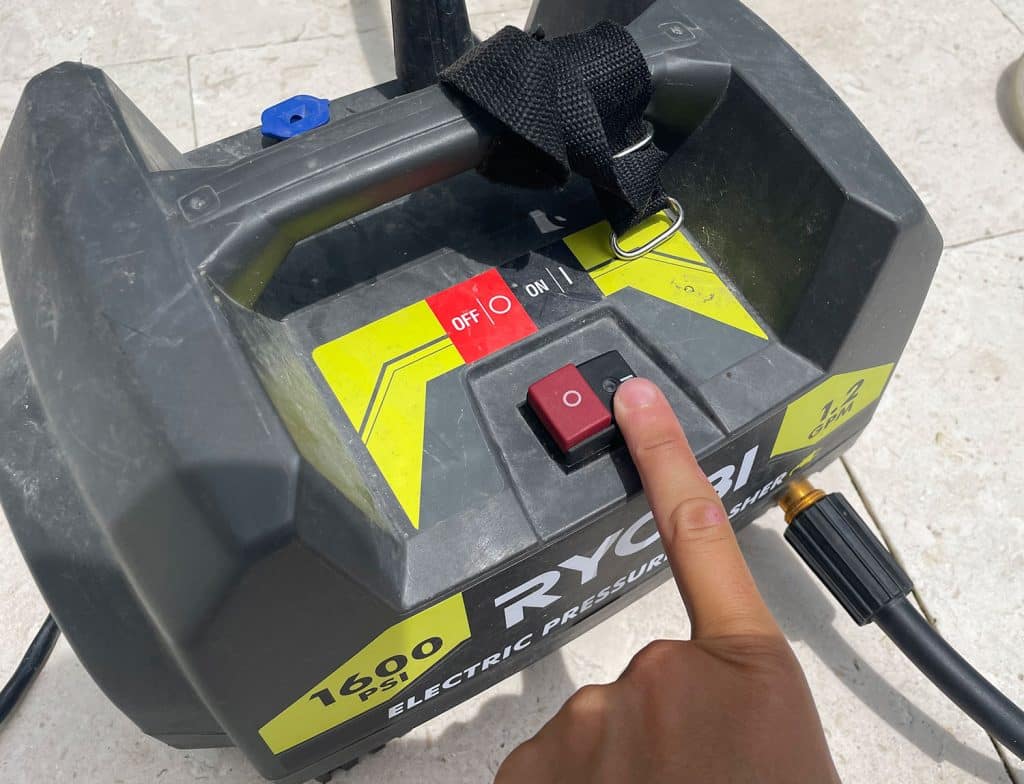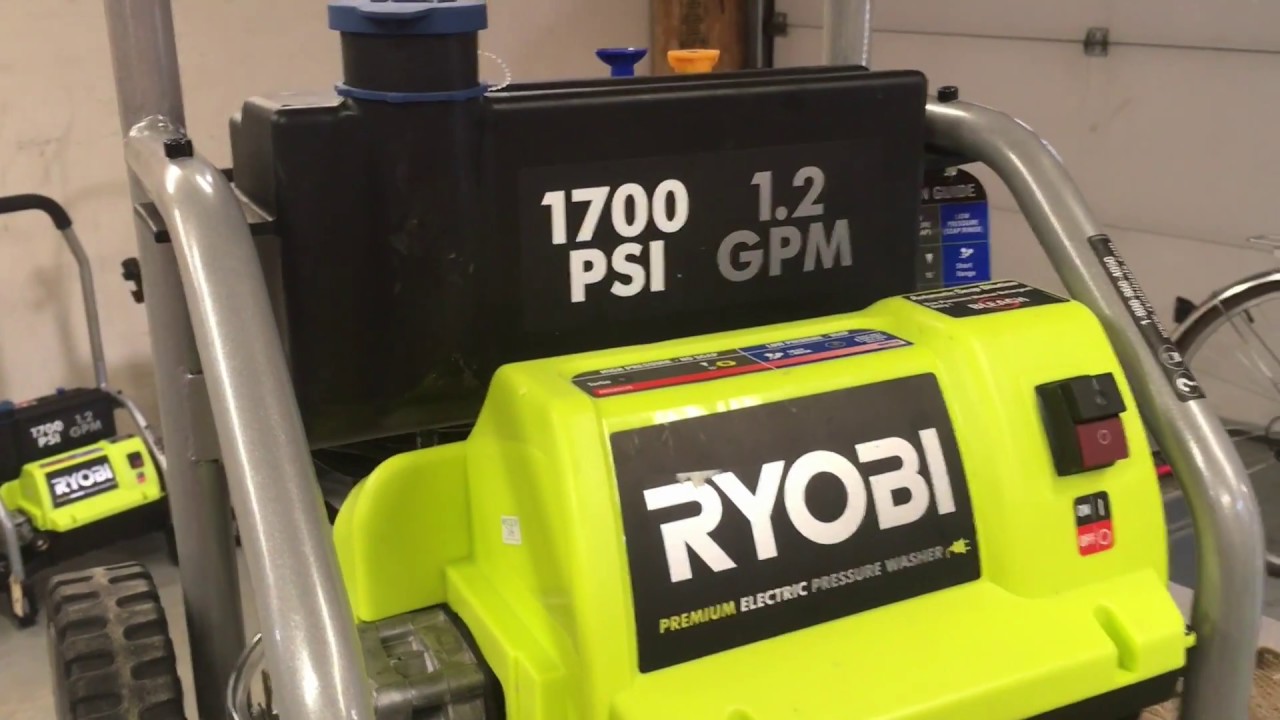Your electric pressure washer may not turn on due to a tripped circuit breaker or a faulty power cord. Check these components first for quick troubleshooting.
Electric pressure washers are convenient tools for cleaning various surfaces efficiently. When they fail to power on, it can be frustrating, especially during a planned cleaning task. Understanding the common reasons behind this issue can save you time and money.
Many users encounter similar problems, often related to power supply or internal components. Before seeking professional help, conducting a few simple checks can help identify the root cause. This guide will explore potential issues and solutions, ensuring your pressure washer gets back to work without unnecessary delays. Keep your cleaning tasks on track with a functioning electric pressure washer.
Page Contents
- 1 Introduction To Electric Pressure Washer Troubles
- 2 Safety First: Pre-check Rituals
- 3 Power Supply Problems
- 4 The Role Of The Pressure Switch
- 5 Water Flow Issues
- 6 Motor And Pump Complications
- 7 Troubleshooting The Unloader Valve
- 8 Electrical Faults In The Machine
- 9 When To Seek Professional Help
- 10 Preventive Measures For Future
- 11 Frequently Asked Questions
- 12 Conclusion
Introduction To Electric Pressure Washer Troubles
Electric pressure washers may not turn on for several reasons. Power supply issues are common. Ensure the unit is plugged in properly. Check for any tripped circuit breakers or blown fuses.
Another common issue is a faulty power cord. Look for any visible damage or fraying. If the cord is damaged, it must be replaced.
Also, check the on/off switch. Sometimes, the switch can become stuck or broken. If the switch is faulty, it needs replacement.
Regular maintenance plays a key role in performance. Clean filters and nozzles often to prevent clogs. Inspect hoses for leaks or wear.
| Issue | Solution |
|---|---|
| Power Supply | Check plugs and circuit breakers |
| Power Cord | Inspect for damage |
| On/Off Switch | Test and replace if needed |
| Maintenance | Regularly clean and inspect |

Credit: www.younghouselove.com
Safety First: Pre-check Rituals
Safety first is important when using an electric pressure washer. Start by checking the power supply. Make sure the outlet works. Try plugging in another device to test it.
Next, check the water supply. Ensure the hose is connected properly. Look for any kinks or blockages. A good water flow is essential for the washer to function.
Lastly, inspect the circuit breaker. If it has tripped, reset it. These simple checks can save time and prevent damage.
Power Supply Problems
Check the electrical outlet first. Make sure it is working properly. Plug in another device to test it. If that device works, the outlet is fine.
Next, inspect the power cord for any damage. Look for cuts, frays, or exposed wires. A damaged cord can prevent the washer from turning on.
Don’t forget to check the GFCI outlet. Press the reset button if it has tripped. This can solve many power issues.
The Role Of The Pressure Switch
The pressure switch plays a key role in your electric pressure washer. It helps control water flow and pressure. A faulty pressure switch can cause various issues.
Common symptoms of a faulty pressure switch include:
- Washer not turning on.
- Pressure not building up.
- Frequent shut-offs during use.
Testing the pressure switch is easy. Use a multimeter to check continuity. If it shows no continuity, replacement is necessary.
Follow these steps to replace the pressure switch:
- Disconnect the power supply.
- Remove the old switch.
- Install the new pressure switch.
- Reconnect the power supply and test.
Water Flow Issues
Check for clogs in the water inlet. A clogged inlet can stop water flow. Look for debris or dirt that might block the opening.
Inspect the hose for any kinks or cracks. These can restrict water from flowing properly. Straighten any bends and replace damaged hoses.
Clear the nozzle to ensure a smooth flow. A clogged nozzle can lead to pressure issues. Remove the nozzle and rinse it under running water.
Use a small brush to remove stubborn debris. Make sure to clean both the nozzle and hose regularly. This helps maintain optimal performance.

Credit: www.youtube.com
Motor And Pump Complications
Overheating can cause serious issues with your electric pressure washer. Signs of overheating include unusual noises and a burning smell. Always check the motor and pump for heat build-up.
Pump cavitation occurs when water flow is disrupted. This can lead to damage and reduced performance. To fix it, ensure proper water supply and remove any obstructions. Regular maintenance helps prevent cavitation.
Troubleshooting The Unloader Valve
Unloader valve issues can stop your electric pressure washer from turning on. Look for leaks or blockages in the valve. These problems can prevent water from flowing properly. Check if the valve is stuck in the open position. This can happen from dirt or debris buildup.
To fix or replace the valve, follow these steps:
| Step | Description |
|---|---|
| 1 | Turn off the power and water supply. |
| 2 | Remove the unloader valve from the washer. |
| 3 | Clean the valve and check for damage. |
| 4 | Replace the valve if necessary. |
| 5 | Reattach the valve and test the washer. |
Electrical Faults In The Machine
Electrical faults can stop your electric pressure washer from turning on. One common issue is the capacitor. This part stores energy for the motor. Check if the capacitor has any visible damage. A swollen or leaking capacitor needs replacement.
Testing the motor’s electrical integrity is also important. Use a multimeter to check the motor’s windings. A reading of zero ohms indicates a short circuit. If the motor shows infinite resistance, it may be damaged. Ensure all connections are tight and clean. Loose or corroded wires can cause problems too.
When To Seek Professional Help
Knowing when to seek professional help is important. If your electric pressure washer does not turn on, it may need expert care. Check for simple issues first, like a blown fuse or loose connections.
If these do not solve the problem, consider calling a qualified repair service. Look for companies with good reviews and experience in repairing electric pressure washers. Ask for quotes to compare prices and services.
| Signs You Need Help | Action Steps |
|---|---|
| Washer won’t turn on | Check power supply and cords |
| Unusual noises | Stop use and consult a pro |
| Leaks or damage | Seek repair services immediately |
Preventive Measures For Future
Regular maintenance is key to keeping your electric pressure washer in good shape. Clean the filter often to avoid clogs. Check the power cord for any damage or frays. Inspect the nozzle to ensure it is clear of debris.
Store your washer in a dry place to prevent rust. Avoid exposing it to extreme temperatures. Use a cover to protect it from dust and dirt. Keep it away from moisture to avoid electrical issues.
Always unplug the unit when not in use. This helps prevent accidental startups. Regularly check for leaks or other issues. Address any problems immediately for a longer lifespan.
Frequently Asked Questions
Why Won’t My Electric Pressure Washer Start?
If your electric pressure washer won’t start, check the power source first. Ensure it’s plugged in and the outlet is functioning. Also, inspect the power cord for any damage. A tripped circuit breaker or blown fuse can also prevent it from turning on.
What To Do If My Pressure Washer Is Dead?
If your pressure washer is dead, start by checking the power supply. Verify that the extension cord is in good condition. Next, check the on/off switch and any safety locks. If it still won’t turn on, consult the user manual for troubleshooting steps.
How Can I Troubleshoot My Pressure Washer?
To troubleshoot your pressure washer, begin with a visual inspection. Look for any loose connections or damaged parts. Ensure the water supply is connected and turned on. Cleaning the filter and checking for clogs can also help restore functionality.
Is My Pressure Washer’s Motor Faulty?
A faulty motor could be the reason your pressure washer isn’t starting. Listen for any unusual sounds when attempting to turn it on. If there’s no sound, the motor may need replacement or repair. Consult a professional if you suspect a motor issue.
Conclusion
Troubleshooting your electric pressure washer can seem daunting. By following the steps outlined, you can identify the issue and restore functionality. Regular maintenance can prevent future problems. Always consult the user manual for specific guidance. With a little effort, you’ll have your pressure washer up and running in no time.

